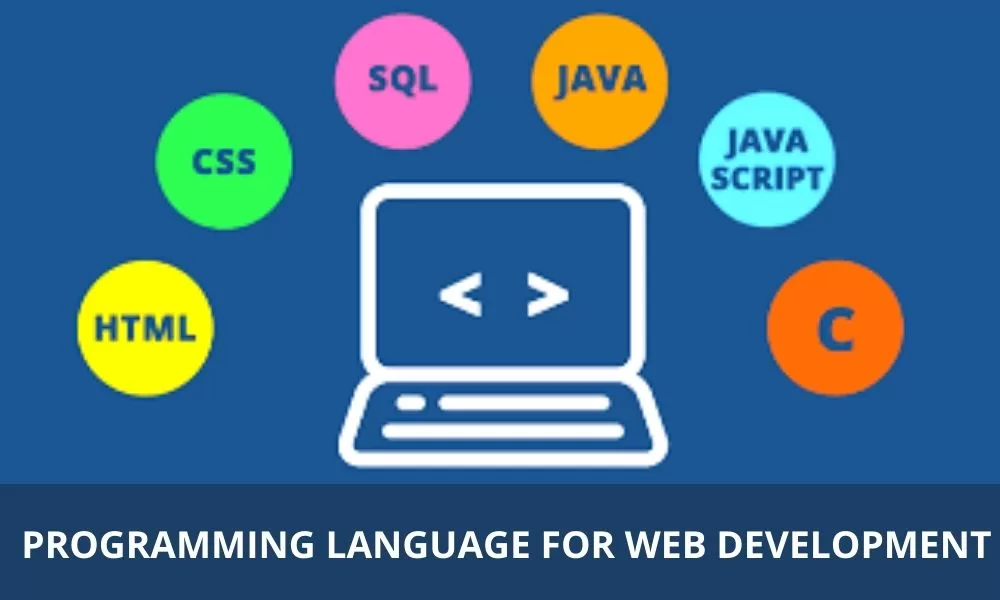Web development languages are used to build websites and web applications that can run on the internet. There are three main languages used in web development:
- HTML (Hypertext Markup Language): It is the foundation of the web and is used to create the structure of a webpage. HTML is a markup language that uses tags to define the content, images, links, and other elements of a webpage.
- CSS (Cascading Style Sheets): CSS is used to style and format the HTML elements of a webpage. It can be used to define the colors, fonts, layouts, and other visual aspects of a webpage.
- JavaScript: JavaScript is a programming language that is used to add interactivity to a webpage. It can be used to create dynamic effects such as animations, pop-ups, and form validation. It can also be used to interact with APIs (Application Programming Interfaces) to access and display data from external sources.
Other popular web development languages and frameworks include:
- PHP: A server-side programming language that is used to build dynamic web applications.
- Ruby on Rails: A web framework for the Ruby programming language that simplifies web development by providing a structure for building web applications.
- Python: A versatile programming language that can be used for both server-side and client-side web development.
- React: is A popular JavaScript library for building user interfaces.
- Angular: A JavaScript framework for building complex web applications.
- Node.js: A JavaScript runtime environment that allows developers to build server-side applications using JavaScript.
What Should You Consider When Selecting a Language?
When selecting a programming language for web development, there are several factors to consider, including:
1. Project requirements: The language you choose should be well-suited to the specific requirements of your project, including the complexity of the application, the expected traffic volume, and the desired features.
2. Developer skill level: The language you choose should be one that your developers are proficient in or are willing to learn. If you have a team of developers who are experts in a particular language, it may be best to choose that language for your project.
3. Community and support: Look for a language with a strong community of developers, as this can provide a wealth of resources and support. This can include forums, documentation, libraries, and open-source code.
4. Security: Security is a critical consideration for web development, and some languages may be more secure than others. Make sure to choose a language that has strong security features, and that is regularly updated to address security vulnerabilities.
5. Performance: The language you choose should be optimized for performance, especially if you are expecting high traffic volume. Consider factors such as speed, memory usage, and scalability when choosing a language.
6. Cost: The cost of the language and any associated tools, frameworks, and hosting should also be considered, as some languages may be more expensive than others.
Ultimately, the best programming language for web development will depend on the specific needs of your project, and it may be necessary to weigh the pros and cons of each language carefully before making a decision.

Tips for Learning Web Development Languages
Learning a web development language can be challenging, but with the right approach, anyone can become proficient in a relatively short amount of time. Here are some tips to help you learn web development languages:
1.Start with the basics: Begin by learning the foundational concepts of the language, including syntax, data types, and control structures. Once you have a good grasp of the basics, you can begin to build more complex applications.
2.Practice, practice, practice: One of the best ways to learn a new language is to practice regularly. Start with simple exercises and work your way up to more complex projects as you become more comfortable with the language.
3.Use online resources: There are many online resources available for learning web development languages, including tutorials, forums, and video courses. Use these resources to supplement your learning and to get answers to any questions you may have.
4.Join a community: Joining a community of web developers can be a great way to learn and stay motivated. Participate in online forums and meetups to network with other developers and learn from their experiences.
5.Build real-world projects: Building real-world projects can be a great way to apply what you have learned and to gain practical experience with the language. Start with simple projects and work your way up to more complex applications.
6.Keep learning: Web development languages are constantly evolving, so it’s important to stay up-to-date with the latest developments. Subscribe to newsletters, blogs, and other online resources to stay informed about the latest trends and best practices in web development.
7.Be patient: Learning a new language takes time and effort, so it’s important to be patient and persistent. Don’t get discouraged if you don’t understand a concept right away, and keep practicing until you master it. With consistent effort, you will eventually become proficient in the language.
Conclusion
In conclusion, there are many web development languages to choose from, each with its own unique features and benefits. When selecting a language, it’s important to consider the specific needs of your project, as well as the skill level of your development team and the cost of the language and associated tools.
Learning a web development language can be challenging, but with practice, patience, and the right resources, anyone can become proficient in a relatively short amount of time. It’s important to start with the basics, practice regularly, use online resources, and build real-world projects to gain practical experience with the language.
Ultimately, the key to success in web development is staying up-to-date with the latest trends and best practices and continuing to learn and grow as a developer. By doing so, you can stay at the forefront of the rapidly evolving world of web development and create high-quality, cutting-edge applications that meet the needs of your users.

